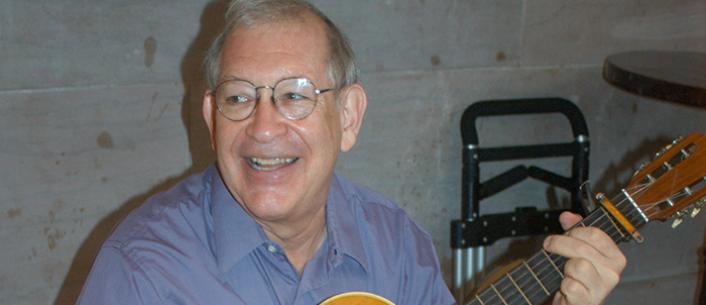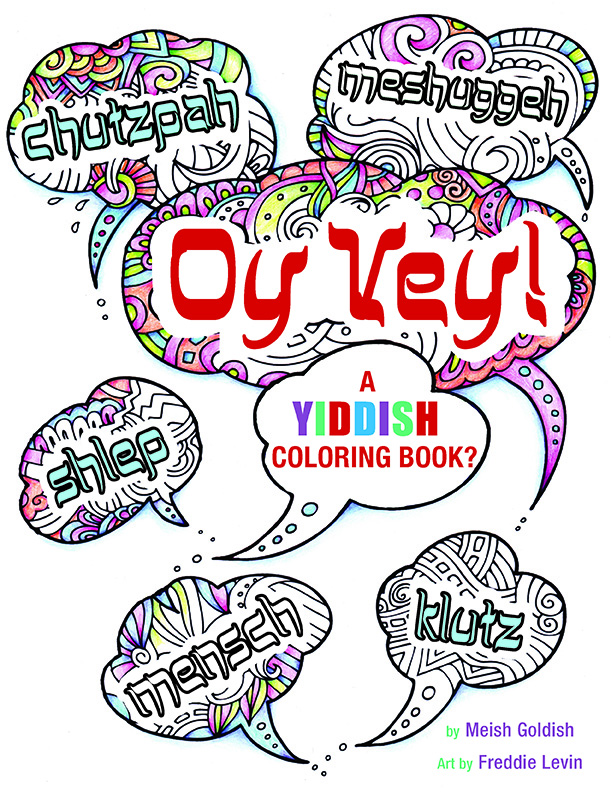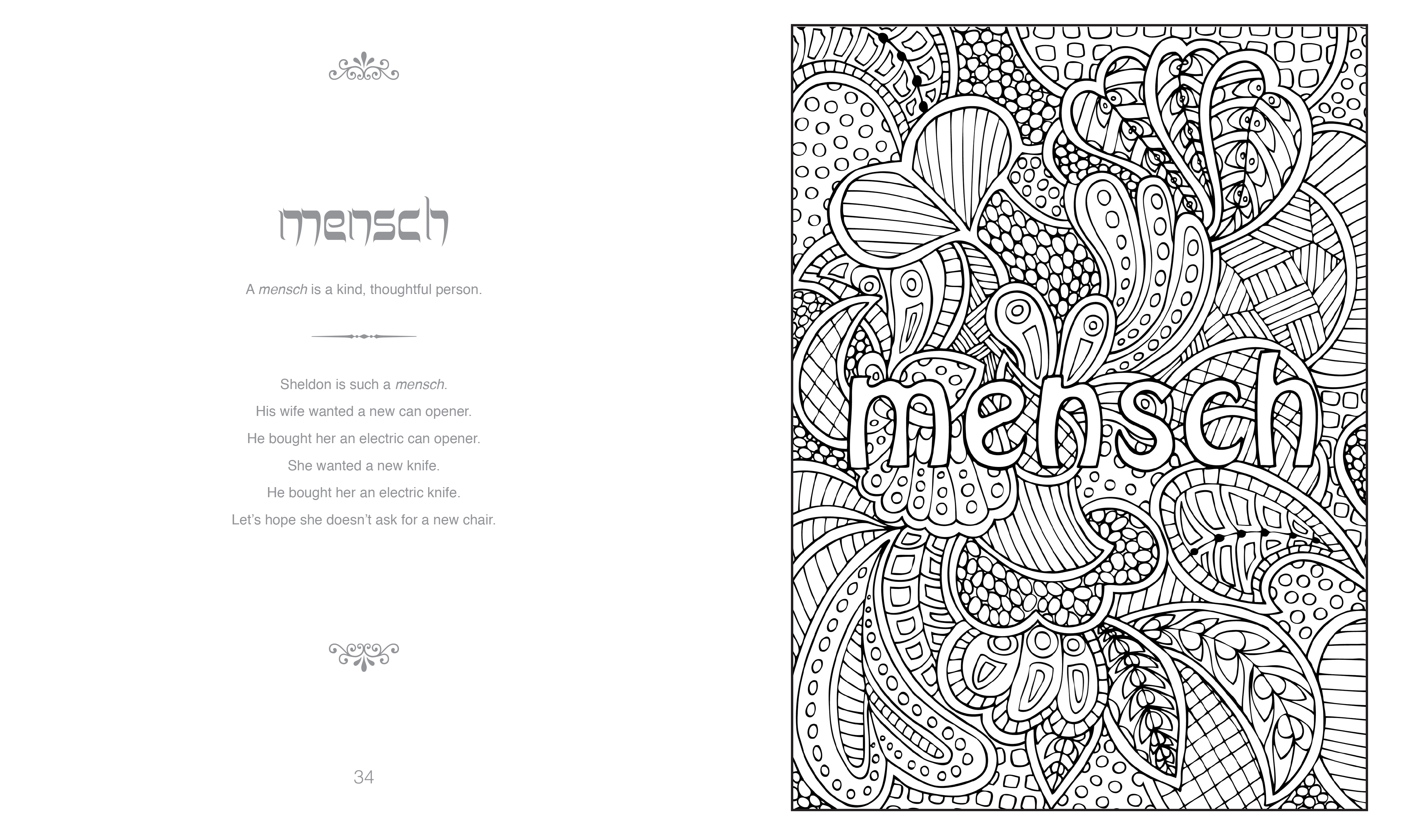- Home
- Play & Learn Home
- Online Enrichment
- Experience Modern Israel
- Israel It's Complicated
- Jewish and Me
- Jewish Holidays Jewish Values
- Jewish Values in Genesis and Jewish Values in Exodus
- Min Ha’aretz
- Our Place in the Universe
- Simply Seder
- The Prophets: Speaking Out for Justice
- Making T'filah Meaningful
- Make, Create, Celebrate
- Yom Haatzmaut Resources
- Hebrew Apps
- About The OLC
- What is the OLC?
- Introduction
- Get Started
- Resources
- OLC Content
- Parent Materials
- See My OLC Classes
- Store
Oy Vey! A Yiddish Coloring Book? Meet Author Meish Goldish
Written by Behrman House Staff, 12 of June, 2017
 Meish Goldish - yes, that's his real name - has written more than 400 children's books, most of them short paperbacks for emerging and developing readers. Oy Vey! A Yiddish Coloring Book? marks Goldish's first book for adults. So, nu? Who is this guy?
Meish Goldish - yes, that's his real name - has written more than 400 children's books, most of them short paperbacks for emerging and developing readers. Oy Vey! A Yiddish Coloring Book? marks Goldish's first book for adults. So, nu? Who is this guy?
How did you get started as an author?
I’m originally from Oklahoma and moved New York City in 1969 because I wanted to write jokes for Johnny Carson on The Tonight Show. I got an interview with Mickey Rose, who was an early collaborator with Woody Allen and was then working as a TV comedy writer. Rose asked me to write 100 jokes and Carson used some of my jokes on TV. It was very exciting, but I needed a real job.
I worked for a while as a high school English teacher. A friend who taught with me became an editor at Prentice Hall [educational publishing company]. This friend knew I had my summers off, and he asked me to write some teacher’s guides and workbooks for them, and then some leveled reading books. I really like writing just for the kids, the creative stuff. I eventually stopped doing the textbook and assessment kind of writing and just focused on the leveled readers. I've been writing for kids for 43 years.
What are your children's books about?
Most of the books I've written are used in schools, in grades K-6. They're mostly between eight and 32 pages, short paperbacks. I write three kinds of books: nonfiction, fiction, and poetry.
Sometimes I’m guided by what a school needs, like a story based on vocabuary words kids are learning. If the list says "astronaut," "moon," etc., my job is to reinforce their learning. Or I'll write jokes and riddles for Scholastic based on words that ,might have a long “o” sound, for example. Words like "show," "boat," "goat." For example, to accommodate the word “boats” I wrote, "What kinds of boats have eyes? The ones that go out to sea."
My nonfiction books are about all kinds of things: how the Empire State Building was built, firefighters, the swimmer Michael Phelps, Haiti.
How does writing for children compare with writing for adults?
It's very hard to write well for children, especially when you're taking a hard concept and have to figure out how to explain it to first graders. But I don’t think of it as writing down to kids. I think of it as trying to explain things in a simple way so that I can understand it.
I did a book about why the moon changes shapes during the month. It took me a while to understand how it worked myself, so I came up with the concept of a dark room with kids holding a flashlight (the sun), other kids holding a white soccer ball (the moon). Depending on their location in the room, the soccer ball will look full or they'll only see part of it. Sometimes you have to come up with an analogy that works.
What's your writing process like?
It's fun, and it's work. I have a schedule and deadlines. It's not just ideas scribbled on the back of a napkin. I love writing nonfiction because I learn so much as I do my research and talk to experts. Then I have to organize all the information and decide what’s most interesting. After I do a sloppy copy I give myself some distance, even a day, before I go back to the manuscript and re-read it and improve it. A draft can always be improved. You have to give yourself space to see that.
One little example of tinkering that makes something better: I wrote a fiction rhyming book about a paper party. It ended with: "Party doll with paper dress. Paper party, what a mess." I thought it sounded good but changed the last line to “Paper party, paper mess.” It was better.
Why write a Yiddish coloring book for adults?
Why Yiddish or why a coloring book? The answer is the same, really. Yiddish is a colorful language. So its words deserve to be colored!
I love Yiddish because if you try to translate it, something gets lost. For example: A mensch mit eyn tokhis ken men nit tantsen af tsvey khasenes. A man with one rear end cannot dance at two weddings. You could say, "A person can't be in two places at once," but the Yiddish says it so much better. Even if you’re American born, I still find there’s something warm and amusing about Yiddish.
My paternal grandparents spoke fluent Yiddish and they would speak it if they didn't want me to understand what they were saying. Grandma would often mix Yiddish and English though, saying things like, "Nem a chair" - Get a chair. Even my name is a Yiddish mix. My Hebrew name is Moshe, but my grandfather spoke with accent and he pronounced it as "Meisha." I dropped the A, and go by Meish.
You write many of your children's books using pen names. Why?
When you write for schools, publishers often want to give people the impression that their books are being written by a wide variety of people. I would rather use my own name, I’m proud of my books. But when school publishers say I can't, I have fun with it instead. Some of my favorite pen names are:
- Bill E. Neder (from the Hebrew b'li neder, “without a vow,” said when you make a promise you know you can't keep)
- Beth Din (from the Hebrew bet din, a rabbinical court)
- Lane D. Parsha (leyn, or read, the weekly Torah portion)
- Cole E. Shaw (from the Hebrew kol isha, “woman’s voice”)
You've had a colorful career even before writing Oy Vey! A Yiddish Coloring Book? What else is interesting about you?
I go almost every night to the theater. Mostly Off and Off-Off Broadway, Russian and Yiddish theater in Brooklyn, small productions. I really just want to enjoy myself. Also, I don't own a cell phone. I don't want to be bothered. I work at home during the day – people can call me there.
Oy Vey! A Yiddish Coloring Book? will be released on August 1, and is available for pre-order on Amazon.


